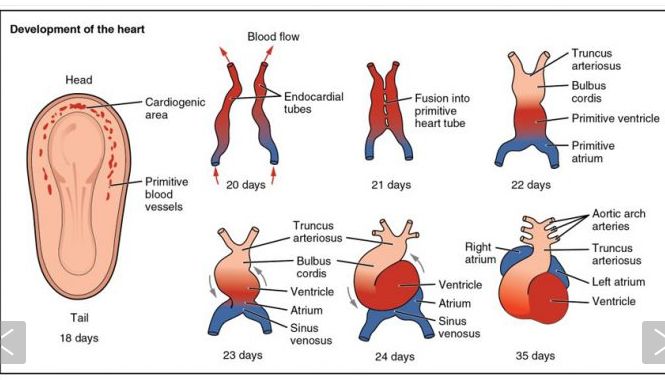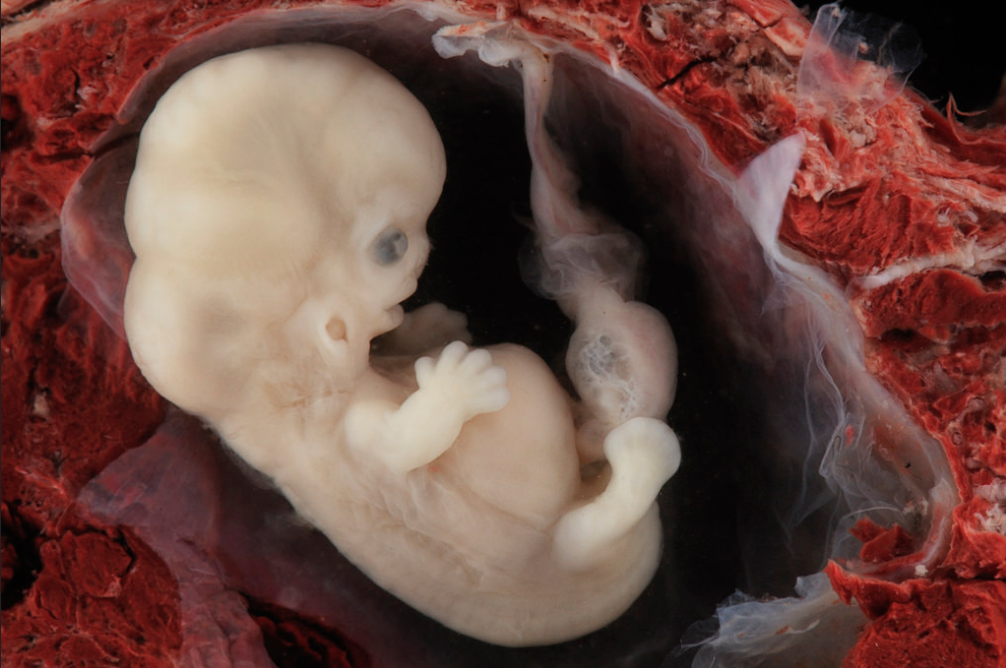A recent article in Popular Science uses false information about fetal development to argue against pro-life heartbeat bans. The article, entitled “Six Pregnancy Facts that will make you think twice about recent abortion bills,” shockingly and inaccurately claims “the embryo has no heart”:
Many of the six-week abortion bans are referred to as ‘heartbeat’ bills, with the logic being that fetal heartbeats can be detected as early as six weeks. But the rhythm a doctor can pick up on an ultrasound at that time isn’t a heartbeat, because the embryo has no heart. The embryo is just 3 or 4 millimeters long with no developed organs. Cells are just starting to group together in ways that might eventually grow into hearts and brains.
Let’s debunk this.
1. The embryo does have a functioning heart.
But according to Chapter 19 of Anatomy and Physiology, a textbook used at Oregon State University, “The human heart is the first functional organ to develop. It begins beating and pumping blood around day 21 or 22, a mere three weeks after fertilization.”
According to the textbook, by 20 days after conception, two endocardial tubes have formed, which then merge the next day into the primitive heart tube. By 22 days, the heart has separated into four distinct regions, which will give rise to the right and left atrium and the right and left ventricle.
By 28 days, the heart has all four chambers it will have in an adult. (See illustration.) Clearly, the heart exists at six weeks.


2. The embryo also has a functioning brain.
The brain at six weeks has all three hemispheres and is giving off brain waves.1 The Visible Embryo, a fetal development site, says that at 37-42 days: “[The] brain is well marked by its cerebral hemispheres.”
Psychology Today describes the embryonic brain this way:
Well before a woman typically knows she is pregnant, her embryo’s brain has already begun to bulge. By five weeks, the organ that looks like a lumpy inchworm has already embarked on the most spectacular feat of human development: the creation of the deeply creased and convoluted cerebral cortex, the part of the brain that will eventually allow the growing person to move, think, speak, plan, and create in a human way.2
The brain at six weeks exists, and already has much of the same structure it will have as an adult.
3. Organs other than the heart and brain are also developing in the embryo.
In the quote below, Dr. E Blechschmidt describes early fetal development:
At the beginning of the 4th week, the young embryo is about three millimeters in size. Now even a layman has no difficulty in recognizing it as a human being, because brain, spinal cord, heart, viscera with stomach, intestines and liver, as well as the first layouts of upper and lower extremities are discernible. All these organs are already functioning, that is, corresponding to their respective properties that have developed at this stage. We do not find any single functionless organ. All organs as part of the whole exercise formative functions, and in this process, the brain functions as the center of growth.3
Blechschmidt wrote these paragraphs in 1982. Scientists have been aware of these facts of fetal development for over 40 years. The knowledge we have of fetal development is well-established. The development of the embryonic heart and brain, as well as other organs, are settled science. These facts, as far as science is concerned, are not controversial.
READ: First trimester babies aren’t blobs of tissue — they’re amazingly complex
For decades, the scientific consensus about fetal development has gone unquestioned and unchallenged. Only now, when the pro-life movement is gaining victory after victory, are pro-abortion activists trying to deny these facts.
Clearly, Popular Science lied about fetal development, or at the very least, published a very ill-informed piece with multiple inaccuracies that were not detected by the editor. The facts of fetal development, as far as science is concerned, are settled. It is pro-abortion activists who are now trying to deceive the public about how developed preborn babies are.
The Heartbeat law will not only save babies if enacted, but also functions as a powerful teaching tool, letting people know that the fetal heartbeat is present by six weeks. (In reality, it is present earlier, but cannot be detected on ultrasound until approximately six weeks). Many people are uncomfortable with knowing that abortion stops a beating heart. This is one reason why pro-choicers lie and try to say the fetal heartbeat is really something else.
- Goldenring, “Development of the Fetal Brain,” New England Journal of Medicine Aug. 26, 1982, p. 564
- Janet L. Hopson “Fetal Psychology” Psychology Today, Sep/Oct98, Vol. 31 Issue 5, p44, 6p, 4c.
- E Blechschmidt, MD “Human Being from the Very First” in Thomas W Hilgers, Dennis J Horan, David Mall New Perspectives on Human Abortion(Frederick, Maryland: University Publications of America, Inc., 1981) p. 18
“Like” Live Action News on Facebook for more pro-life news and commentary!







